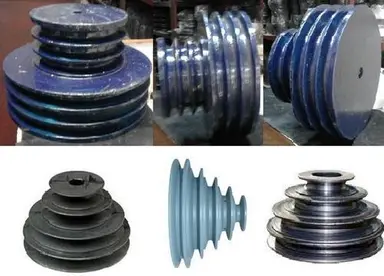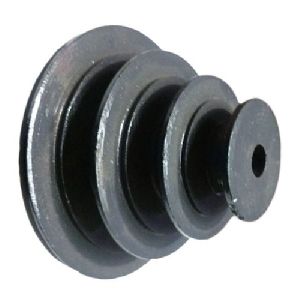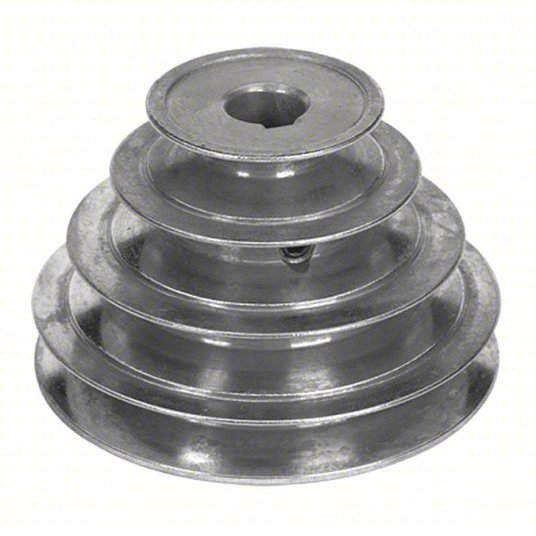Product Description
Custom Flat Nylon Plastic Pulley / Wire Rope Conveyor Head Pulley / Small Mini Belt Pulley
Products Type
We can custom shape,size,color material and quantity for plastic pulley as your requirment.
Products Specification
1. Various hardness for your choice.
2. Good abrasion, heat and oil resistance.
3. Good anti-aging performance and gas tightness.
4. Ease of bonding to other material.
5. Excellent oxygen and CHINAMFG resistance.
6. Non-flammable,self-extinguish.
| Material | PA,PA6,PA66,PP,PE,LDPE,HDPE,UWHDPE,PTFE,POM,ABS,or Custom Compound (Any custom compound plastic is available) |
| Size | According to samples or drawings |
| Color | Black,white,red,green,transparent or any color according to Pantone colors |
| Finish | High Gloss,Fine Grain,Electroplating,Painting,Printing,Texture etc,or as request |
| Type | Round,square,rectangular,or any nonstandard shape as request |
| Logo | Debossed,embossed,printed logo or as request |
Plastic Material Properties
Company Profile
Zhongde (ZheJiang ) Machinery Equipment Co.,LTD is a company integrated in design,OEM&ODM plastic&rubber&CNCparts production.We can provide the best products and service at a competitive price.
Main Products
We can provide OEM service,which means producing base on your drawings or samples,also we can design according to its application or customer`s requirments.
Order Operation Flow
We execute each step according to the operation process flow, strictly, seriously and meet the requirements of customers with good quality on time.
For Fast Quotation,Please Inform Below Details
1. Production type
2. Material specification (or let us know the using environmental)
3. Size details? (or provide drawings or samples for refference)
4. Quantity request
5. Prefer color
|
Shipping Cost:
Estimated freight per unit. |
To be negotiated |
|---|
| Customized: | Customized |
|---|---|
| Color: | Customized |
| Type: | Rotating Wheel |
| Samples: |
US$ 999/Piece
1 Piece(Min.Order) | Order Sample For sample price, package information, and logisti
|
|---|
| Customization: |
Available
| Customized Request |
|---|

What role do step pulleys play in achieving variable speed control in machinery?
Step pulleys play a crucial role in achieving variable speed control in machinery. Here’s how they contribute to this capability:
1. Speed Variation:
Step pulleys provide multiple steps or levels of different diameters. By changing the position of the belt or chain from one step to another, the effective diameter of the pulley is altered. This variation in diameter results in different speed ratios between the driving pulley and the driven pulley. By selecting different steps, the rotational speed of the driven component can be adjusted, allowing for variable speed control.
2. Manual Adjustment:
Step pulleys enable manual adjustment of the speed. Operators can easily and quickly change the speed by shifting the belt or chain to a different step on the pulley. This manual adjustment feature provides simplicity and convenience in achieving the desired speed for different tasks or operating conditions.
3. Speed Range:
The arrangement of steps on the pulley determines the available speed range. Step pulleys can be designed with a range of steps, each corresponding to a specific speed ratio. This allows for a wide range of speed options, making them suitable for applications that require variable speeds.
4. Incremental Speed Control:
Step pulleys offer incremental speed control. Each step on the pulley corresponds to a specific speed ratio, allowing for precise speed adjustments. Operators can select the step that provides the desired speed increment for the specific task at hand. This incremental control is particularly useful when fine-tuning the speed for optimal performance.
5. Adaptability:
Step pulleys are adaptable to different power transmission systems. They can be easily integrated into various machinery setups, allowing for variable speed control in a wide range of applications. Whether it’s in industrial machinery, woodworking equipment, or even domestic appliances, step pulleys provide a versatile solution for achieving variable speed control.
6. Energy Efficiency:
Variable speed control offered by step pulleys contributes to energy efficiency. By adjusting the speed to match the requirements of the task, unnecessary power consumption can be avoided. This energy-saving feature is beneficial in terms of reducing operating costs and promoting sustainability.
Overall, step pulleys are essential components for achieving variable speed control in machinery. Their ability to vary speed through manual adjustment and their adaptability to different systems make them a reliable and effective solution for applications that require flexible speed control.

Can step pulleys be retrofitted into existing machinery for performance upgrades?
Yes, step pulleys can be retrofitted into existing machinery to provide performance upgrades. Retrofitting step pulleys offers a cost-effective solution to enhance the functionality and versatility of older machines. Here are some key points to consider:
1. Compatibility:
Before retrofitting step pulleys, it is important to ensure compatibility between the existing machinery and the pulley system. Consider factors such as available space, shaft diameter, and belt compatibility. Assess whether the installation of a step pulley system will fit within the existing framework of the machine.
2. Evaluation of Requirements:
Identify the specific performance upgrades you aim to achieve by retrofitting step pulleys. Determine if the existing machine’s speed range and control capabilities are limiting its functionality for certain tasks. Assess whether the addition of step pulleys will address these limitations and provide the desired performance improvements.
3. Design and Engineering:
Consult with professionals or engineers experienced in retrofitting machinery to design and engineer the step pulley retrofit solution. They can assess the feasibility, provide guidance on selecting the appropriate step pulley system, and ensure proper integration with the existing machinery.
4. Installation Process:
The installation of step pulleys typically involves disassembling certain components of the machine to access the drive system. This may require skilled personnel or technicians familiar with the specific machine. Follow proper installation procedures to ensure the pulleys are mounted securely and aligned correctly with the drive system.
5. Belt Tension and Alignment:
Proper belt tension and alignment are crucial for the smooth operation of step pulleys. Ensure that the belts are tensioned according to the manufacturer’s recommendations, and the pulleys are aligned to minimize belt slippage and maximize power transmission efficiency.
6. Testing and Calibration:
After the retrofit, thoroughly test the machine to ensure that the step pulley system functions as intended. Check for any issues such as belt slippage, unusual vibrations, or excessive noise. Make any necessary adjustments or calibrations to optimize the performance of the retrofit.
7. Safety Considerations:
During the retrofit process, prioritize safety considerations. Follow all safety guidelines and procedures to protect personnel and ensure safe operation of the machinery. This may include proper lockout/tagout procedures during installation and maintenance.
By retrofitting step pulleys into existing machinery, you can upgrade performance, add variable speed control, and enhance the versatility of the machine. However, it is essential to carefully evaluate compatibility, seek professional guidance, and follow proper installation and testing procedures to ensure a successful retrofit that meets your performance objectives.

What types of belts or cables are typically employed with step pulleys?
Step pulleys are commonly used with specific types of belts or cables that are suitable for power transmission and engagement with the pulley’s steps. Here are some typical belt and cable options employed with step pulleys:
1. V-Belts:
V-belts are one of the most widely used types of belts with step pulleys. They have a trapezoidal cross-section and are designed to fit into the V-shaped grooves on the steps of the pulley. V-belts offer good power transmission capabilities and are known for their high frictional grip.
2. Flat Belts:
Flat belts, as the name suggests, have a flat cross-section. They are often made of materials like rubber, nylon, or leather. Flat belts are suitable for step pulleys that have wider and flatter steps. They provide reliable power transmission but may have lower grip compared to V-belts.
3. Synchronous Belts:
Synchronous belts, also known as timing belts, have teeth on the inner surface. They are designed to engage with matching teeth on the steps of the pulley. Synchronous belts offer precise power transmission and are commonly used in applications where accurate timing and synchronization are required.
4. Chain and Sprocket:
In some cases, step pulleys may be employed with chains and sprockets instead of belts. Chains with matching pitch and sprockets with corresponding teeth engage with the pulley steps, providing durable and efficient power transmission. Chain and sprocket setups are often used in heavy-duty applications.
5. Cable and Sheave:
For certain applications, such as in elevators or cranes, step pulleys may be used with cables and sheaves. The cable is wound around the sheave on the pulley, allowing for smooth and controlled movement.
The choice of belt or cable depends on factors such as the specific application, power requirements, speed range, and environmental conditions. It’s important to select the appropriate belt or cable that can effectively engage with the steps of the step pulley and provide reliable power transmission.


editor by CX
2023-09-28